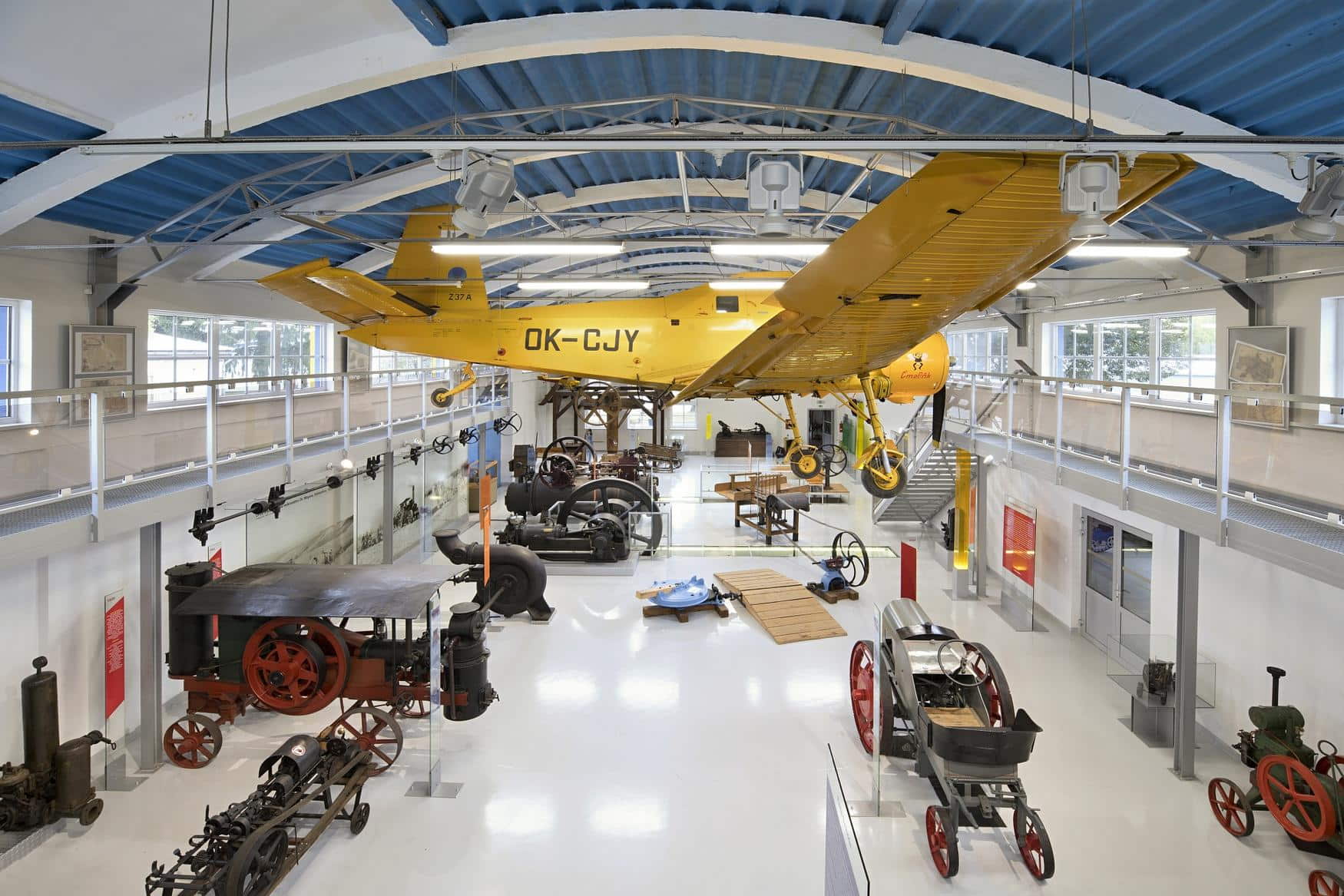In the heart of Prague, the National Museum of Agriculture awaits families with a curiosity for rural life and the journey of food from farm to table. This museum is not just a building; it's a cultural landmark juxtaposing Czech agriculture's past and present through various engaging exhibits. Nestled beside other historical treasures, the museum stands as a testament to the nation's agricultural heritage, offering a distinctive educational experience that is enlightening and entertaining for adults and children alike.
For those traveling with younger adventurers, the National Museum of Agriculture presents a unique opportunity to explore the super-modern interactive exhibitions. They are specifically designed to enthrall nature enthusiasts and traditional farming aficionados. The museum's functionalist architecture is a marvel in its own right, highlighting the museum's importance not just to agriculture but also to the architectural story of the Czech Republic.
Contents
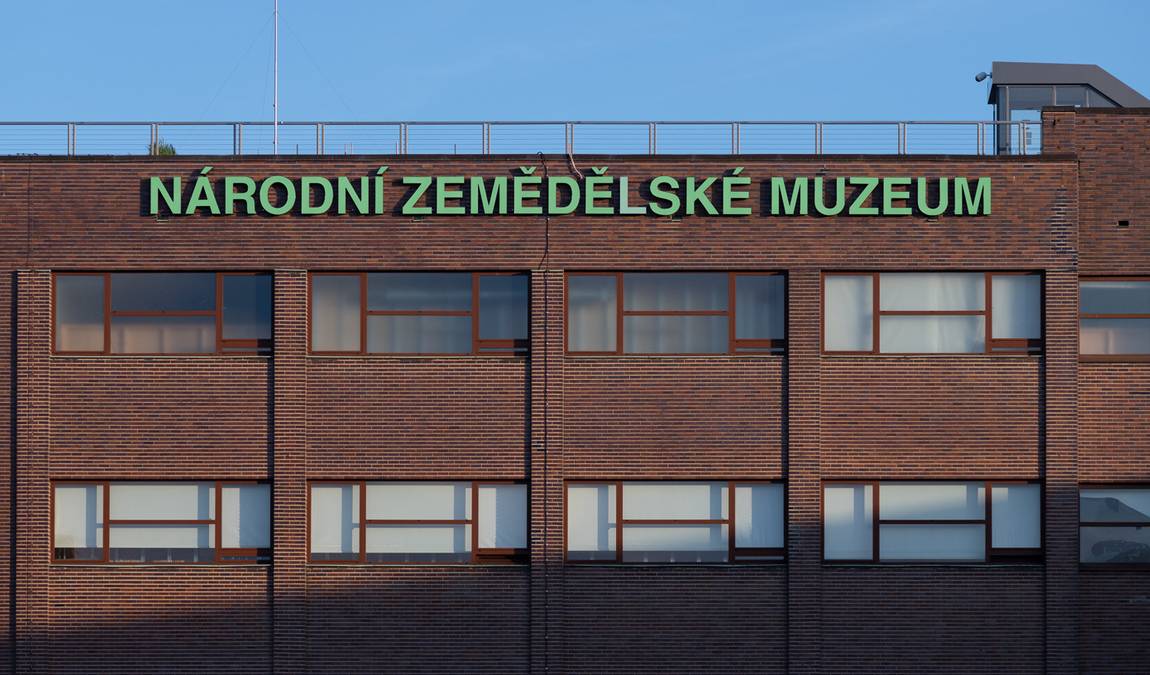 Photo: nzm.cz
Photo: nzm.cz
The museum's diverse displays, which offer visitors an insight into rural lifestyles and the evolution of farming practices, range from historic machinery to ecological farming techniques. It’s a place where imaginatively curated exhibits meet family-friendly learning, ensuring that every member, regardless of age, has a newfound appreciation for agriculture's role in our world.
Why It Might Be Interesting for Kids
The National Museum of Agriculture in Prague offers a captivating experience that will intrigue children of various ages. Here are three main reasons why the National Museum of Agriculture is worth visiting with kids
- Interactive Exhibits: Children are naturally curious and love to learn through play. The museum caters to this with its abundance of interactive exhibits. From moving tractors to big machinery, kids can engage in a tactile exploration of agricultural wonders, making it a highly educational yet fun outing.
- Educational Materials: They provide educational worksheets designed to help young minds grasp complex concepts related to agriculture in a simplified way. These materials can make kids feel like little scientists or farmers as they discover the importance of agriculture to people and the environment.
- Diverse Topics: Agriculture is not just about farming; it encompasses fishing, hunting, and natural resources, which are adeptly covered on the museum's second floor. This variety ensures that there's something to spark children's interest at different developmental stages, typically ages five to fifteen.
Kids are drawn to hands-on experiences, and families will find the museum's storytelling approach accessible and engaging for their young ones. The gastronomy studio is also worth noticing, where the most youthful of gourmands might develop an appreciation for the farm-to-table journey. During summer, visiting the rooftop garden offers a chance to enjoy Prague's lush greenery and panoramic views. This experience is as educational as it is enchanting.
History and Foundations
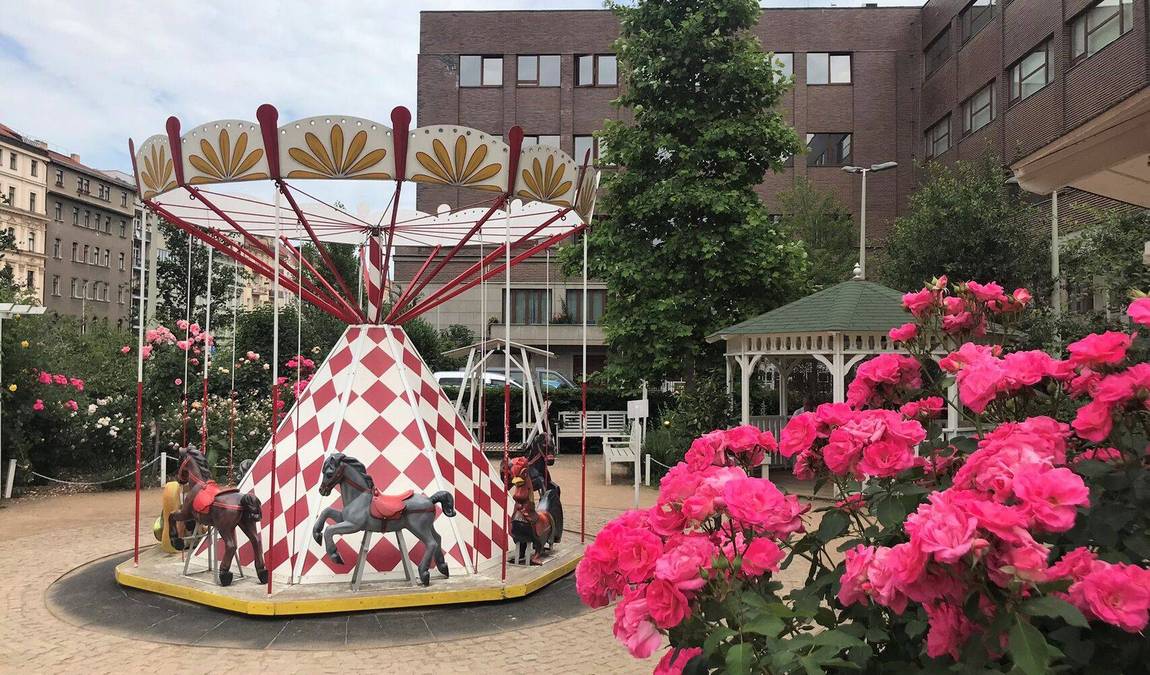 Photo: nzm.cz
Photo: nzm.cz
The National Museum of Agriculture in Prague, also known as Národní zemědělské muzeum, is a cherishable landmark chronicling the Czech Republic's agricultural progression. From its roots to its stately modern-day presence, it is a repository of agricultural feats and memories.
Establishment and Location
The Czech National Agricultural Museum's collections trace back to the World Fair (Jubilee Exhibition) in Prague in 1891. Initially housed in an ethnography museum after the fair's closure, the agricultural museum gained independence in 1918. Over the years, the collections found homes in various locations until the construction of a splendid museum building in 1937-39 in Prague's Letná area, designed in the Modernist style by architect Milan Babuška (1884-1953).
Occupied by Nazi forces during World War II, the building served diverse purposes for almost five decades post-war, while the collections were exhibited elsewhere in Czechoslovakia. The museum returned to its original location in 1994.
Additionally, the museum extends its presence with four branches across the Czech Republic.
The Museum of the Czech Countryside at Kačina highlights the evolution of agricultural techniques, presenting agricultural implements and rural craft demonstrations. At the Cáslav branch, you will find a unique machinery collection boasting one of Europe's largest collections of tractors and plows. Forestry, fishing, and hunting take center stage at the Ohrada Museum, while the Valtice branch delves into horticulture and vineyards.
Museum Evolution
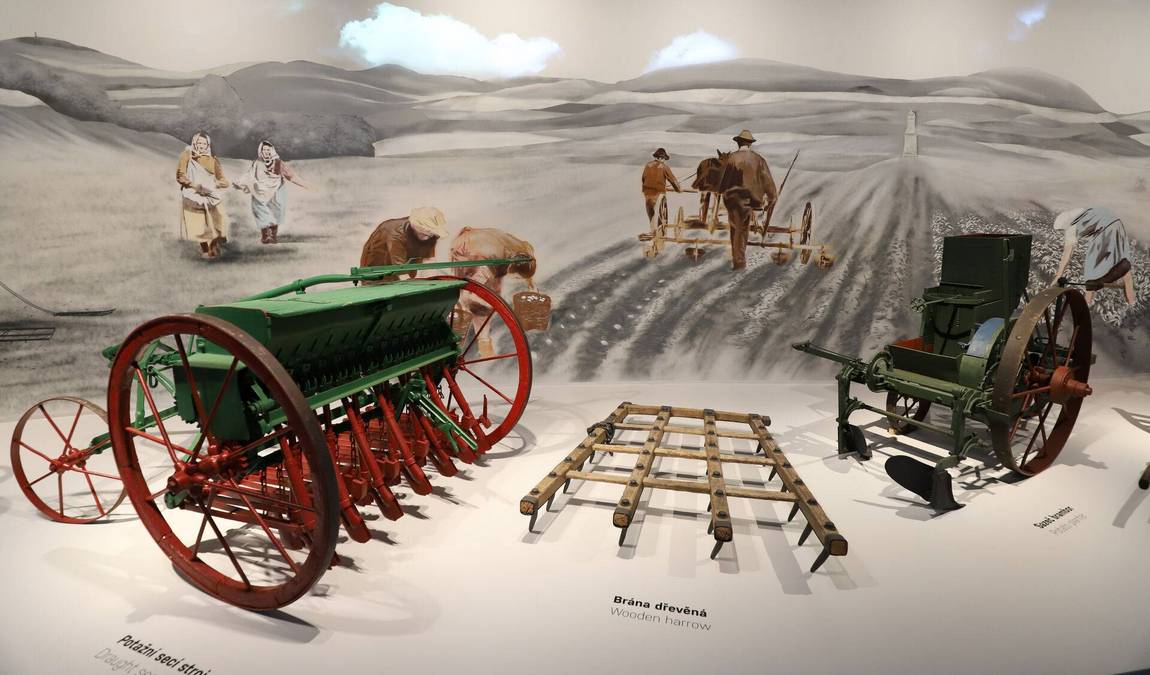 Photo: nzm.cz
Photo: nzm.cz
Throughout its history, the museum has undergone significant transformations, mirroring the evolution of agriculture in the Czech Republic. Its branches today portray a diverse range of Czech agricultural history and technology. Each exhibit, event, and piece of agricultural machinery shown at the museum represents part of a long-standing narrative, respectful of the land and its bounty, promising an engaging visit for all ages.
Architectural Significance
A testament to a functionalist structure, the museum's building stands out as an essential monument of Czech Functionalism. Its design reflects agriculture's pragmatic and progressive vision, complementing its educational mission. Visitors are often captivated by the architectural merit, which houses historical treasures and is a piece of the nation's vast cultural landscape.
Permanent Expositions
The National Museum of Agriculture in Prague offers a rich tapestry of permanent exhibitions, each delving into distinct aspects of agricultural evolution and practices. From the progression of farming tools to the intricacies of forestry and gamekeeping, visitors are invited to explore the intersections of human development and natural resources. Ideal for families, these exhibitions present an engaging journey through the history and progress of agriculture, underscoring its importance to both past and present societies.
Explore the permanent exhibition on the ground floor, centering on the evolution of agricultural techniques. The second floor is devoted to natural resources, particularly highlighting fishing and hunting. On the third floor, delve into the significance of agriculture in shaping human history. Explore the fourth floor dedicated to food, recycling, and food distribution. Engage in hands-on experiments in the Discovery Room, offering activities well-suited for kids and adults alike.
Agricultural Advances
 Photo: nzm.cz
Photo: nzm.cz
The Agricultural Advances section showcases a remarkable collection of historical agricultural technology, offering insight into how innovations have shaped modern farming. Here, children and adults alike can marvel at the evolution from simple hand-held tools to complex machinery enabling mankind to thrive. At the Agricultural Museum, witness a diverse display of over twenty types of tractors.
These showcase those crafted in the Czech Republic and feature models produced by Ford and German manufacturers. The exhibition underscores the ingenuity and resourcefulness that have driven agricultural progress throughout the centuries.
Forestry and Gamekeeping
 Photo: nzm.cz
Photo: nzm.cz
Forestry and Gamekeeping highlight the sustainable management and conservation of forests and wildlife. The exhibits detail practices that balance human needs with ecological preservation, illustrating how forests serve as vital resources for timber and recreation and the biodiversity they support. They also provide an informative look at the responsibilities and skills of gamekeeping in maintaining the delicate balance of forest ecosystems.
Fishing Practices
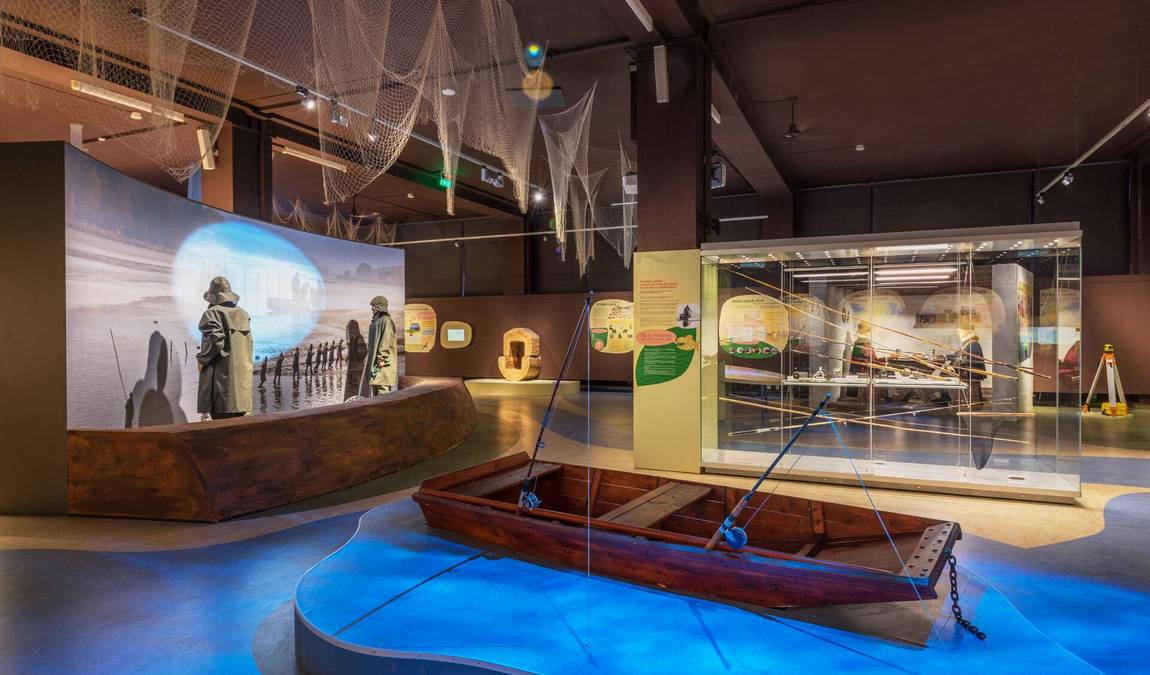 Photo: nzm.cz
Photo: nzm.cz
Delve into the world of Fishing Practices to discover the historical significance of fishing as a key source of nourishment. Through interactive displays, including freshwater aquariums, visitors learn about various fishing methods and tools and the importance of conserving marine and freshwater ecosystems. The exhibits emphasize the correlation between humanity's fishing practices and the availability of these critical natural resources.
Hunting Traditions
The Hunting Traditions section captures the essence of hunting from the early days of hunter-gatherers to contemporary sport and subsistence hunting. This segment explores hunting as a means of survival and as a cultural and social activity that has shaped human history. It presents an authentic view of hunting, gamekeeping, and the deep-rooted traditions that continue to influence this practice today.
Food and Gastronomy
The fascinating world of Food and Gastronomy awaits those interested in the journey of food from soil to table. This exhibit teases the senses with explorations into the art and science of food preparation, presentation, and preservation. It examines how agriculture influences gastronomy and highlights how food binds communities through shared culinary experiences.
Special Exhibits and Events
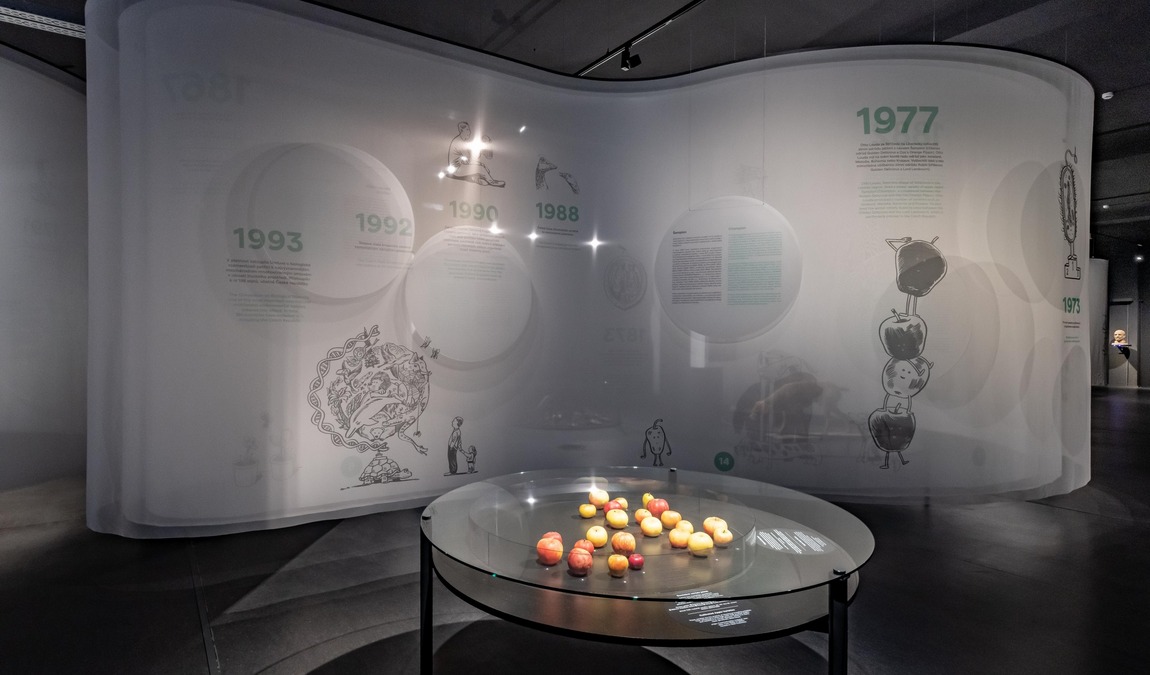 Photo: facebook.com/zemedelskemuzeum
Photo: facebook.com/zemedelskemuzeum
Family visitors will find the Special Exhibits and Events section brimming with dynamic, rotating exhibitions that delve into various intriguing agricultural topics. Regularly updated to reflect seasonal themes or significant agricultural milestones, these exhibits offer fresh perspectives and noteworthy events that captivate visitors of all ages, leaving lasting impressions long after their visit.
The National Museum of Agriculture invites families to journey through these permanent exhibitions, uniting the past with the present to celebrate the land and its bounty.
Education and Interactive Elements
The Agriculture Museum offers a cornucopia of educational and interactive experiences tailored to enthuse families and children with the wonders of agriculture. Engaging exhibits complemented by hands-on activities ensure that learning is an adventure here.
Children's Activities
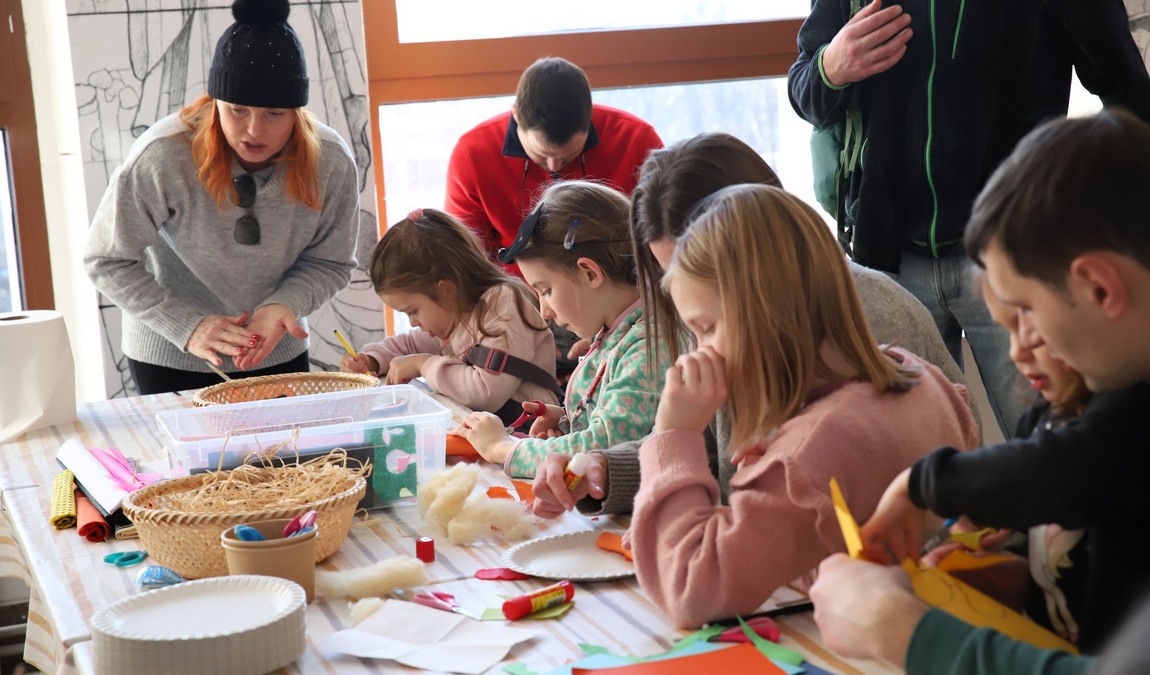 Photo: facebook.com/zemedelskemuzeum
Photo: facebook.com/zemedelskemuzeum
The museum truly understands the significance of learning through play, and its Children's Activities are designed to kindle the curiosity of young minds. From clambering aboard real tractors at the dedicated tractor exhibition to steering through virtual fields with the tractor simulator, the museum presents a unique playground that educates as it entertains.
Educational Programs
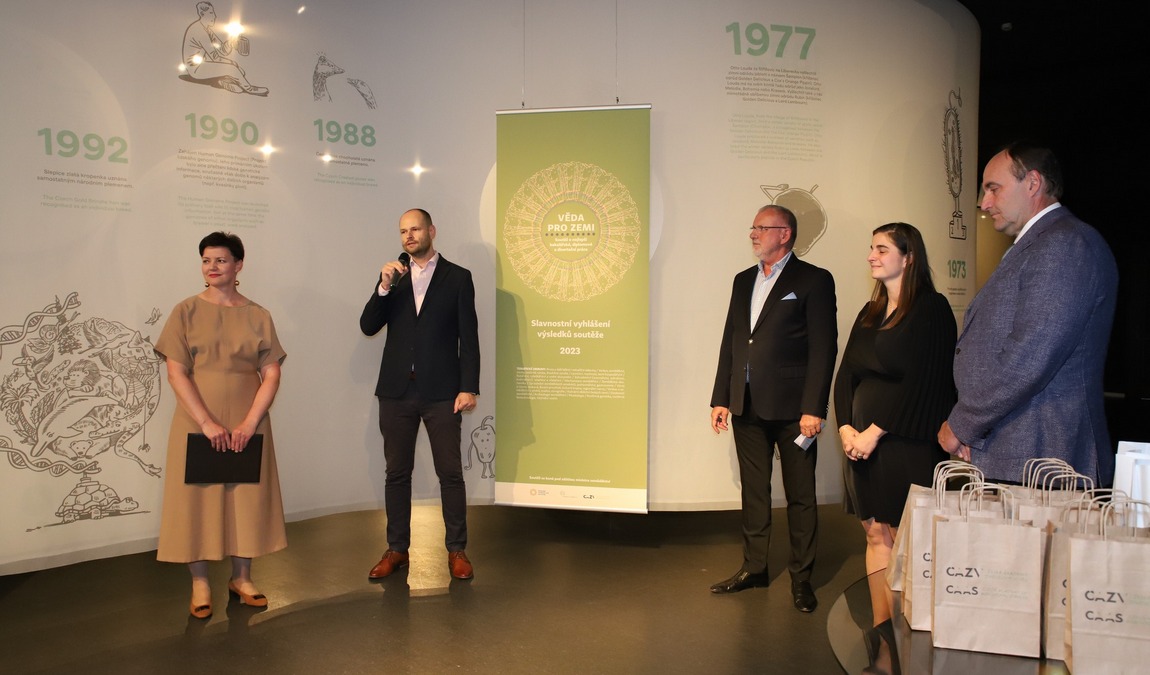 Photo: facebook.com/zemedelskemuzeum
Photo: facebook.com/zemedelskemuzeum
With a diverse range of Educational Programs, the museum presents a robust educational platform that encapsulates interactive elements such as quizzes and events to engage families in the story of agriculture. Each program is meticulously planned to elaborate the dynamics of farming and agricultural science to the younger audience, visiting both enlightening and enjoyable.
Facilities and Visitor Information
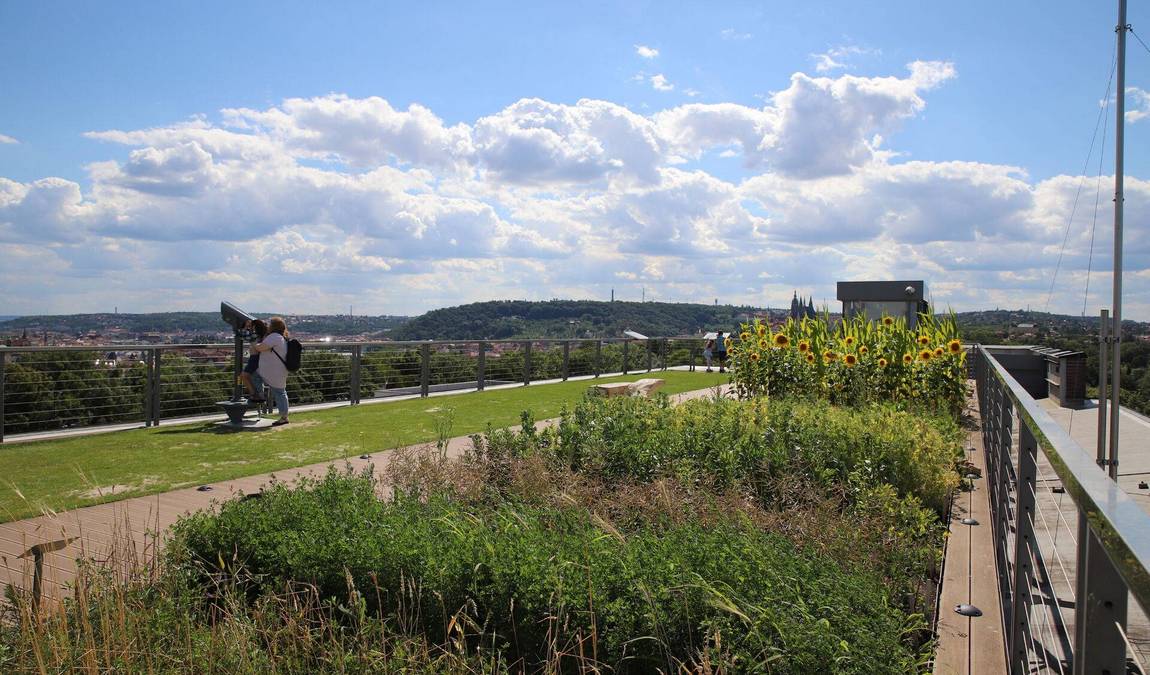
The National Agricultural Museum presents a range of facilities that cater to all ages, making it an ideal family destination in the Letná area. From its extensive library and research services to a charming rooftop oasis, this institution ensures a rewarding visit for casual and academic visitors. Accessibility is a priority, allowing everyone to explore this educational hotspot's interactive elements.
The museum's library provides a quiet space for studying and exploring the agricultural sciences. Researchers and enthusiasts will find a wealth of resources available. Opening hours are aligned with the museum's operational schedule, ensuring ample time for visitors to dig into literature.
Visitors can purchase unique merchandise at the Museum Shop reflecting Prague's agricultural heritage. Ideal for family souvenirs, the shop's diverse offerings range from educational materials to intricately designed memorabilia.
Experience the roof of the building, a viewing terrace, an herb garden, and a picnic area that provides breathtaking vistas of Prague. Rent picnic equipment from the museum shop, where you can indulge in delectable Czech food. The museum courtyard, with benches, gazebos, and live farm animals, also provides a magnificent relaxing place.
Museum Accessibility
The museum prides itself on being accessible to everyone. Detailed information on entrance fees and potential discounts with the Prague visitor pass should be obtained at the entrance. With features like ramps and elevators, the museum ensures that every exhibit and attraction, including those with interactive elements, is available to all family members regardless of physical ability.
Best Time to Visit
The National Museum of Agriculture in Prague is a delightful destination for families looking to explore the rich tapestry of Czech agricultural history. Timing is everything when capturing the essence of this educational journey at its finest, especially when arranging a visit that caters to children's curious minds.
Spring and Autumn: These seasons offer pleasantly mild weather ideal for family outings. Visitors should consider weekdays, as weekends tend to draw larger crowds. The museum provides a quieter environment during school hours, allowing families to engage more deeply with the exhibits.
Morning Hours: It is recommended that families visit right after the doors open in the morning. It allows families to relish the fresh energy of the day and interact with exhibits before the afternoon wave of visitors arrives.
- Tuesday to Sunday: Open from morning until late afternoon.
- Monday: Closed, providing time for exhibits to be refreshed.
Note on Accessibility: The museum ensures that all areas are accessible, making it convenient for strollers and those with mobility concerns.
To enrich the experience for youngsters, one might align their visit with the museum's schedule of interactive workshops and educational programs, which can be found on the official National Museum of Agriculture website, which frequently updates its events calendar.
Families visiting Prague will discover the National Museum of Agriculture as a place where learning and enjoyment bloom side by side, making any visit a memorable chapter in their travel diary.
Just 200 metres away is the equally interesting exhibition of the National Technical Museum and Letna Park, where you can have a great time with the whole family.
How Long Does It Take to Attend?
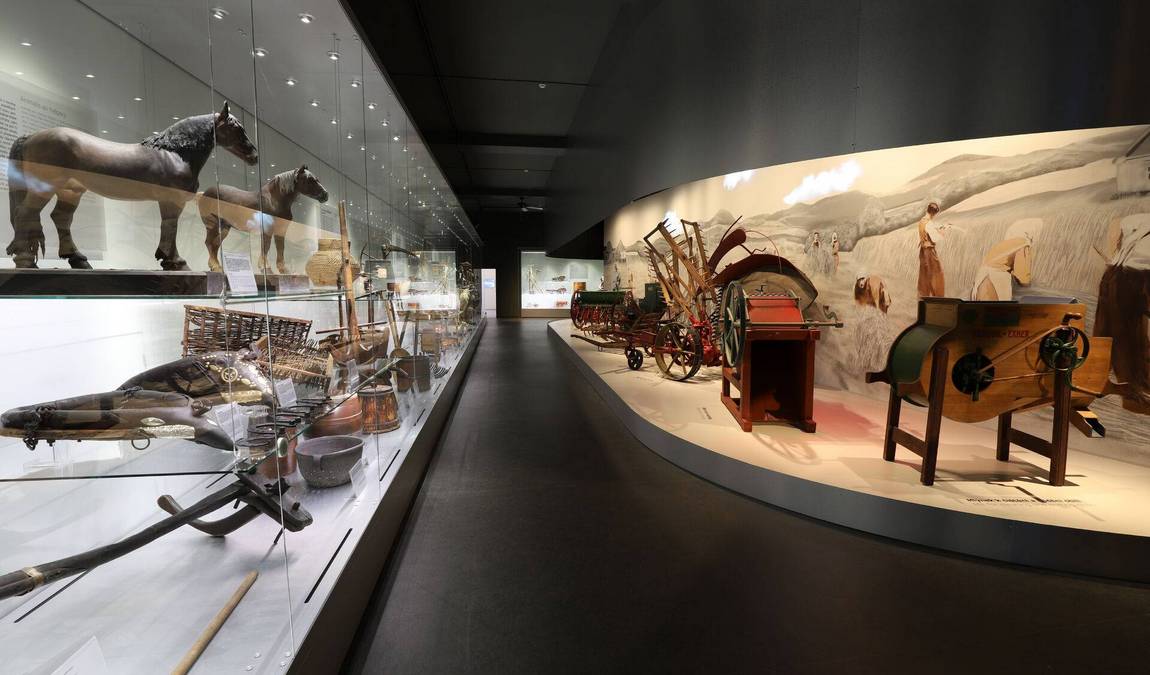
Photo: nzm.cz
When planning a visit to the National Museum of Agriculture in Prague, families can expect to spend 1 to 2 hours exploring the exhibits and activities tailored to all ages. The museum thoughtfully balances educational content with interactive displays, ensuring children remain engaged throughout the visit.
Visit Duration:
- Brief Visit: Roughly 1 hour to wander through the main exhibitions.
- In-depth Exploration: Close to 2 hours, including interactive displays and the panoramic rooftop terrace.
Family Considerations:
- Little ones may tire quicker, so plan for shorter visits.
- Interactive exhibits are a win for keeping kids entertained and can extend a family's stay.
Museum Highlights:
- Permanent exhibitions
- Seasonal events and learning workshops
- Stunning views from the rooftop
Parents should note that there are often events and workshops that could extend a visit. These special programs are excellent opportunities for hands-on learning. Therefore, checking the museum’s program beforehand is advisable to make the most of the trip.
The museum also boasts a grassy rooftop terrace, providing a unique vantage point of Prague’s skyline — perfect for a midway break amidst exhibition exploration. Families often enjoy a leisurely pace, especially with younger children, allowing them to absorb the rich agricultural history at their rhythm.
Is the National Museum of Agriculture Worth Visiting?
When many traveling families arrive in Prague, they might ask: Is a trip to the National Museum of Agriculture worth adding to the itinerary? This unique museum boasts a family-friendly environment where interactive exhibits come to life, crafting an educational and enjoyable experience for adults and young children.
Exhibitions & Activities: The museum offers a glimpse into agricultural history with a modern twist. Four floors of hands-on activities ensure the experience is far from passive; children can engage with ride-on tractors, participate in play kitchens, and more.
Accessibility & Facilities: Situated conveniently next to the National Technical Museum and housed in a notable example of Czech Functionalism, the accessibility is easy for families with access to ample amenities.
- Educational Value: The museum presents a unique perspective on agriculture, an integral part of human civilization.
- Entertainment for Kids: With interactive elements designed to educate and entertain, children are sure to be captivated.
There are many reasons to visit National Museum of Agriculture. For families visiting Prague, it's a balancing act to find activities that are both educational for adults and captivating for kids. The National Museum of Agriculture strides to meet this balance with interactive exhibits, educational displays, and a fun environment.
The National Museum of Agriculture is worth visiting for its unique academic perspective, interactive and child-friendly exhibits, and significant role in elucidating agriculture's impact on our history. Families should consider adding this museum to their Prague travel plans to ensure a day full of learning and laughter.




